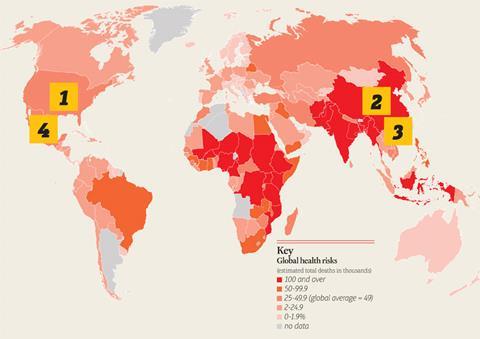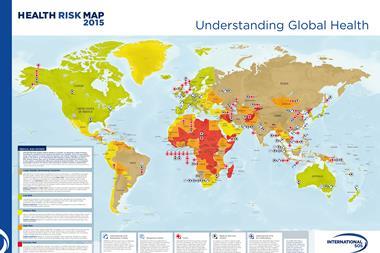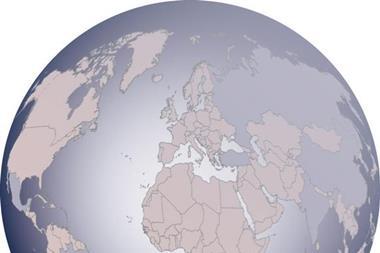While political unrest overseas is topping many firms’ risk agenda, the wellbeing of foreign-posted staff should also be up there

With civil unrest rippling across the world, it’s easy to overlook some of the other health and safety risks facing employees who travel overseas. According to a poll by International SOS at the beginning of the year, 13 months after uprisings in Tunisia sparked the Arab Spring, a quarter of businesses are most concerned about the impact of political turmoil and government instability on their business travellers. Opportunistic crimes (16%) and natural disasters (15%) were second and third on the list of worries.
But the emphasis on political risk threatens to overshadow another important issue for companies that send staff abroad: the danger of contracting an illness or suffering an injury abroad. Being taken ill or injured in a foreign land can be a distressing experience as well as a costly one if it is badly handled. Organisations (and their directors) have a duty of care to make sure employees are safe when they are at work (see Theory & Practice on page 33 for more details on legal liabilities). This includes when they travel abroad for work. As businesses increase their activity in emerging and frontier markets, the issue becomes all the more pertinent. As our Risk Map on these pages shows, the risk hotspots can be found in many of the emerging markets, such as Africa, the Far East and Latin America.
Poorly prepared employees sent overseas can face problems. These range from the mild, such as a stomach bug, to the extreme, for example diphtheria, a throat and respiratory infection that can cause ugly sores and even heart failure. While it has been largely eradicated in the industrialised countries of the West, diphtheria is not uncommon in some parts of the Far East, Russia, North Africa and Latin America.
The bacteria are contracted through physical contact with infected people or via airborne particles. A sore throat is the first symptom. Diphtheria is commonly vaccinated against in Europe but since the benefits of vaccination decrease with age, a booster shot is recommended for anyone travelling to areas where the disease has not been eradicated.
Putting aside the emotional distress and physical trauma that a disease like this causes for the individual concerned, having key workers struck down by illness can be potentially costly for the organisation concerned. It’s unlikely that any large company would send employees abroad without the right insurance, but if they are found to be not fulfilling their duty of care, they could be on the receiving end of a costly law suit. Having a proper health and safety programme that covers all employees no matter where they are in the world is critical for businesses bringing operations to new locations safely, effectively and profitably.
A good health and safety programme can improve staff productivity and loyalty, reduce medical risks and reduce the costs of treatment, as well as diminish your liability risk. For their part, employees have a responsibility to act and behave appropriately. At the very least, according to International SOS, employees who travel to disease prone areas should:
- consult a doctor or clinic for an individualised health and risk assessment prior to departure;
- ensure that routine vaccinations (including tetanus, diphtheria and measles) are up to date;
- consider vaccinations for hepatitis A, hepatitis B, typhoid and rabies;
- be particularly aware of malaria risk. Discuss preventative medications with your doctor; and
- research how to avoid illness, select safe foods and water, and avoid injury.
(For more tips on safe travel, see below.)
Health hotspots

1. USA, Kansas: Spanish flu
Despite its name, Spanish flu originated in a US military camp in Kansas in March 1918. It is considered the most lethal pandemic in the history of humankind, killing as many as 100 million people worldwide. The virus has since been identified as a strain of H1N1.
2. China, Guizhou: Asian flu
The virus originated in China in early 1956 and lasted until 1958. The World Health Organisation estimates the worldwide deaths cause by the pandemic to be about two million. Asian flu was of the H2N2 strain of type A influenza and a vaccine was developed in 1957 to contain its outbreak.
3. Hong Kong: Hong Kong flu
The third flu of the 20th century appeared in Hong Kong on 13 July 1968 and soon spread to Vietnam and Singapore. In comparison to other pandemics, the Hong Kong flu yielded a low death rate. It infected about 500,000 Hong Kong residents and killed 33,800 people in the USA.
4. Mexico City: Swine flu
The H1N1 influenza virus, dubbed ‘swine flu’ by US media, was the first official pandemic of the 21st century. While it is not known where the virus originated, it was first detected in Mexico City on March 18th 2009. It caused 14,286 confirmed deaths worldwide.
Five safe travel tips
1. Drink cautiously - Alcohol dulls the senses, and in an unfamiliar location this lessened awareness can be especially dangerous. If you have one too many, ensure you have planned the route back to your hotel in advance and remain with a group.
2. Be street smart - Tourists can be vulnerable to robbery, pickpockets and assault, particularly because they may not know the areas to avoid. To limit the risks, stick with your group and avoid travelling alone. Leave valuables (like your passport) in the hotel safe. And be sure to only access an ATM from a secure facility, like a bank.
3. Manage your medications and health - Every country has different rules and regulations about prescription drugs. If you need to carry medication abroad, be sure to check local laws. Travellers who violate the rules (even unintentionally) may face serious consequences. Pack extra medicine in case your travel is delayed. Purchasing medicine abroad is not advisable as the quality or dosages might be different.
4. Enjoy local flavours without fear - Food-borne illness and local strains of bacteria can run havoc on a traveller’s digestive system. Be sure to check, before you leave, if your destination has safe tap water or other dietary concerns. Bottled beverages are always your safest bet and be careful about ice and fountain beverages.
5. Take the high road when it comes to ground transport - Navigating unusual roadways can be confusing and dangerous. Travellers face a greater risk of injury or death from vehicle-related incidents, especially in developing countries. Try to avoid driving at night or when weather conditions make it difficult. Use only regulated cabs and always sit in the backseat in case an accident occurs.
Source: International SOS




















No comments yet